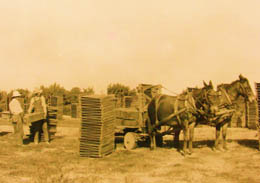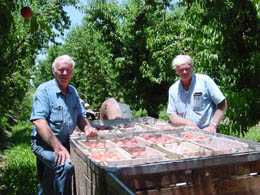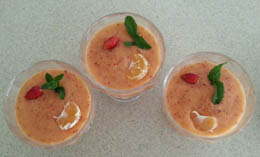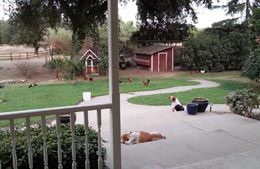Profile: Olson Family Farms
- By Heidi Lewis
- Reading Time: 3 mins.

Olson Family Farms in California’s Central Valley is truly a family affair. Five generations have lived on the farmstead and worked the land since John and Anna Olson emigrated from Sweden in 1888. They bought a 22-acre parcel in Kingsburg (Fresno County) and planted peach trees. Back then, before trucking and refrigeration, peaches were hand-sliced and sun-dried. The whole family worked at the peach enterprise.
In the 125 years since, the farm has grown, at one point to some 500 acres, and then contracted, so they could be sustainable. Today it grows upwards of 70 varieties of stone fruit, including peaches, nectarines, plums, and apricots. The farm is now managed by the fourth and fifth-generation Olsons.

John’s great-great-grandson Olof Olson spends his winters in Sweden where he is earning his doctorate in biological medicine but returns each summer for the harvest season. The farm “currently has three generations living side by side,” Olson told The FruitGuys and the extended family lives, works, and shares their meals together.
The Olson family’s stone fruit heritage may be deeply rooted, but so is its organic heritage. “We’ve been organic since before there was organic,” says Olof. The Olsons have never used synthetic treatments on their lands and made the move to become certified organic in 1989. That’s what you might call being an early adopter.
Want farm-fresh fruit?
We've got you covered.Not Easy Being Green
 Stone fruit—peaches, plums, nectarines, and cherries—are not the easiest fruit to grow organically. They have a delicate constitution and suffer when the weather brings excessive heat or rain to the spring blossoms and early fruit. April rains can create an opportunity for pathogens and surprise frosts can damage the fruit. Stone fruit farmers never vacation during the growing season—they need to stay vigilant to environmental changes. Some conventional stone fruit growers rely on applications of fungicides on pre-harvest fruit to prevent browning, and herbicides to clear the weeds from beneath the trees (weeds can compete with the trees for water uptake). But organic farmers like Olson do things differently. When asked if growing organically was challenging, Olson answered that there was really no other option: “We feel that we should do it the right way to keep poison out of the environment.”
Stone fruit—peaches, plums, nectarines, and cherries—are not the easiest fruit to grow organically. They have a delicate constitution and suffer when the weather brings excessive heat or rain to the spring blossoms and early fruit. April rains can create an opportunity for pathogens and surprise frosts can damage the fruit. Stone fruit farmers never vacation during the growing season—they need to stay vigilant to environmental changes. Some conventional stone fruit growers rely on applications of fungicides on pre-harvest fruit to prevent browning, and herbicides to clear the weeds from beneath the trees (weeds can compete with the trees for water uptake). But organic farmers like Olson do things differently. When asked if growing organically was challenging, Olson answered that there was really no other option: “We feel that we should do it the right way to keep poison out of the environment.”

The Olsons use IPM (integrated pest management), as well as techniques such as hedges and cover crops. The farm uses oak trees to help create habitat and windbreaks. Olof told us that precise prescriptions are a bit of a proprietary secret. But it’s clear he has an intimate knowledge of the interplay between the land, the water, and fruit varieties the family grows. “When you turn the grass mat and see hundreds of spiders scurry away, you know they’re gonna help control the aphids,” he said.
It takes a lot more effort to farm this way, but as Olaf’s father Wayne Olson says, “The pleasure of seeing a dove nesting among the blossoms; the quail and rabbits in the cover crops of clover; and the freshness of each new day are rewards in themselves.” We might add that it makes for the best-tasting fruit as well.
Want farm-fresh fruit?
We've got you covered.
Heidi Lewis writes about farms, bees, and fruit from her home in Sonoma County, CA. She’s been with The FruitGuys since they were FruitKids.


